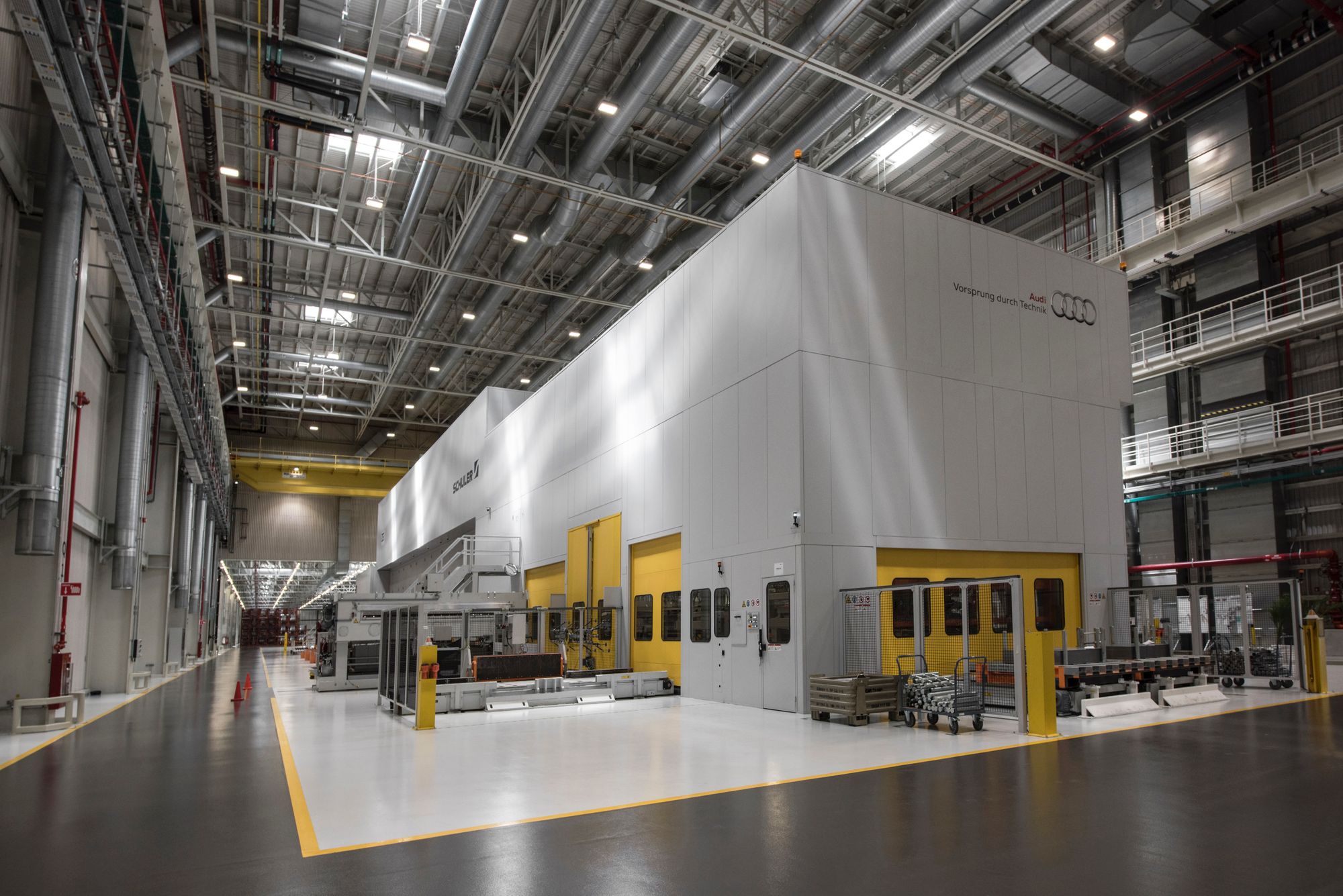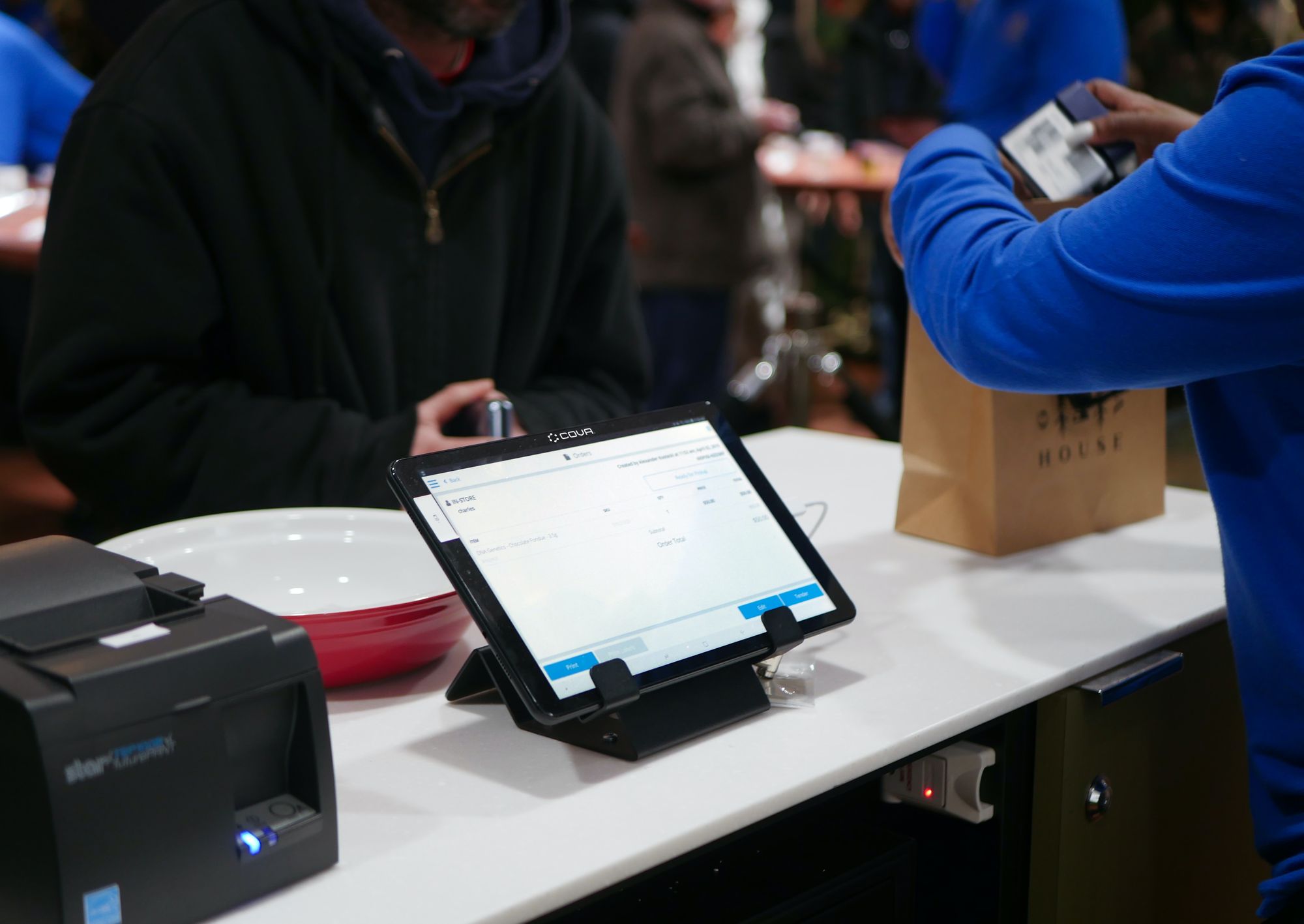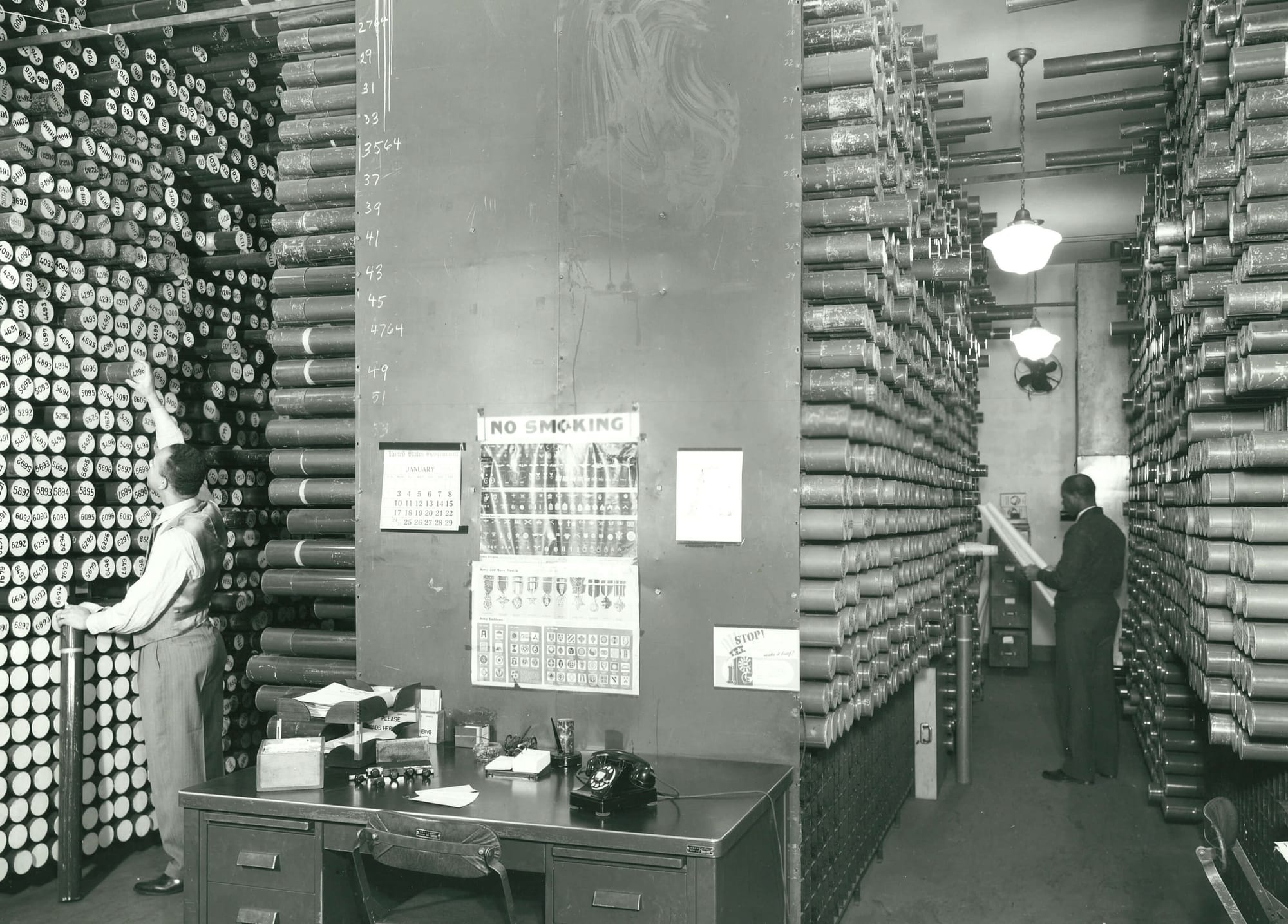81% of manufacturing executives concur that the COVID-19 epidemic has enhanced the necessity of flexible and robust supply chains, according to a recent McKinsey survey. In addition, 79% of CEOs want to increase supply chain visibility to better inventory management and decision-making.
These statistics highlight the changing dynamics in inventory controls and the growing recognition among manufacturing executives of the need to adapt and evolve. The pandemic has acted as a catalyst, driving organizations to reevaluate their inventory management strategies, embrace digital solutions, and adopt more agile approaches.
In this article, we will explore the changing landscape of inventory controls and shed light on what manufacturing executives need to know to stay ahead. We will delve into key trends such as digitalization, automation, and data analytics in inventory management.

We will discuss the benefits of implementing cloud-based inventory systems, leveraging real-time data, and utilizing advanced technologies like the Internet of Things (IoT) and artificial intelligence (AI).
Furthermore, we will address the importance of supply chain resilience, risk management, and the adoption of lean inventory practices to enhance agility and responsiveness.
We will also explore the rising significance of sustainability in inventory controls and how organizations are integrating environmental considerations into their inventory management strategies.
This article will provide manufacturing executives with valuable insights and practical guidance to navigate the changing landscape of inventory controls.
By embracing these shifts and implementing innovative strategies, executives can optimize their inventory management processes, reduce costs, improve customer satisfaction, and drive business growth.
Here is what we shall cover in this post:
- Embracing Digital Transformation in Inventory Management
- Utilizing Data Analytics for Predictive Inventory Management
- Addressing Supply Chain Disruptions and Resilience in Inventory Controls
- Enhancing Inventory Visibility Through Blockchain Technology
- Future Trends: Advancements in Inventory Control Technologies and Practices
- How Deskera Can Assist You?
- Conclusion
- Key Takeaways
Embracing Digital Transformation in Inventory Management
Embracing digital transformation in inventory management is crucial for businesses to stay competitive in today's rapidly changing business landscape. The integration of digital technologies and advanced software solutions can revolutionize traditional inventory management practices, leading to improved efficiency, accuracy, and decision-making.
Here are some key areas where digital transformation can make a significant impact on inventory management:
Inventory Visibility: Digital transformation enables real-time visibility into inventory levels, locations, and movement across multiple locations or warehouses.
Advanced inventory management systems provide up-to-date information, allowing businesses to make informed decisions regarding stock levels, replenishment, and order fulfillment.
Automation and Robotics: Digital technologies such as automation and robotics can automate various aspects of inventory management, including receiving, picking, packing, and shipping.
Automated systems can reduce human error, improve efficiency, and speed up processes, resulting in faster order fulfillment and reduced operational costs.
Cloud-Based Inventory Management Systems: Cloud-based inventory management systems provide businesses with the flexibility and scalability to manage their inventory from anywhere, at any time.
These systems enable real-time data access, collaboration with suppliers and partners, and seamless integration with other business applications, enhancing overall inventory management efficiency.
Data Analytics and AI: Digital transformation allows businesses to leverage data analytics and artificial intelligence (AI) algorithms to gain valuable insights from large datasets. Advanced analytics can help identify demand patterns, optimize inventory levels, predict customer behavior, and improve forecasting accuracy.
AI-powered algorithms can automate repetitive tasks, detect anomalies, and suggest optimal inventory strategies.
Internet of Things (IoT): IoT devices, such as sensors and RFID tags, can provide real-time data on inventory levels, temperature, humidity, and other critical parameters. This enables businesses to monitor inventory conditions, detect potential issues, and proactively manage stock levels.
IoT-enabled inventory management systems can streamline processes, improve accuracy, and reduce manual effort.
Mobile Applications: Mobile applications allow inventory managers and warehouse personnel to access inventory information on smartphones or tablets, enabling on-the-go inventory tracking, order management, and communication.
Mobile apps provide real-time updates, improve communication, and empower employees to make timely decisions.
Predictive Analytics and Demand Forecasting: Digital transformation enables businesses to leverage predictive analytics and demand forecasting models to anticipate customer demand and optimize inventory levels.
These tools analyze historical data, market trends, and other variables to generate accurate demand forecasts, helping businesses reduce stockouts, minimize excess inventory, and improve customer satisfaction.
Integration with Supply Chain Partners: Digital transformation facilitates seamless integration and data sharing with suppliers, distributors, and other supply chain partners. This enables collaborative planning, improved coordination, and more efficient inventory management across the entire supply chain.
Integrated systems can automate ordering processes, synchronize inventory levels, and facilitate efficient replenishment.
Enhanced Customer Experience: Digital transformation can help businesses provide a superior customer experience by offering real-time inventory availability, accurate order tracking, and personalized recommendations. This can result in improved customer satisfaction, increased loyalty, and repeat business.
Data Security and Compliance: With digital transformation comes the need for robust data security measures and compliance with privacy regulations. Implementing secure inventory management systems and ensuring compliance with data protection laws helps safeguard sensitive inventory and customer information.
The Impact of E-commerce and Omni-channel on Inventory Controls
The rise of e-commerce and the growing demand for omnichannel retail experiences have significantly impacted inventory controls. These trends have disrupted traditional inventory management practices and forced businesses to rethink their strategies.
Here are some key impacts of e-commerce and omnichannel on inventory controls:
Increased Stock Keeping Units (SKUs): E-commerce and omnichannel retailing have led to an exponential increase in the number of SKUs businesses need to manage.
With online sales channels and multiple physical store locations, businesses must carry a larger variety of products to meet customer demands. This requires more sophisticated inventory control systems to track and manage the expanded product range.
Inventory Synchronization Across Channels: With omnichannel retailing, businesses need to ensure inventory synchronization across various sales channels. This means that inventory levels should be updated in real-time, regardless of whether a product is purchased online or in-store.
Inventory management systems that integrate with e-commerce platforms and point-of-sale systems help businesses achieve accurate inventory synchronization across channels, minimizing the risk of overselling or underselling.
Fulfillment Challenges: E-commerce and omnichannel retailing have introduced new fulfillment challenges. Businesses need to efficiently process and fulfill online orders, which may involve picking and packing from different locations and managing shipping logistics.
Implementing efficient fulfillment processes, such as using automated picking systems or outsourcing fulfillment to third-party logistics providers, is essential to meet the demands of e-commerce and omnichannel operations.
Inventory Allocation and Replenishment: With multiple sales channels, businesses must allocate inventory strategically to optimize sales and minimize stockouts. Effective inventory controls involve analyzing sales data, demand patterns, and customer preferences to determine the appropriate allocation of inventory across channels.
Businesses also need to implement efficient replenishment processes to ensure timely restocking of inventory to meet customer demand.
Reverse Logistics and Returns Management: E-commerce has brought about an increase in product returns due to factors like buyer remorse or defective items. Managing returns and reverse logistics requires robust inventory control systems that can handle the reverse flow of products, track inventory status, and process returns efficiently.
Implementing effective returns management processes minimizes inventory holding costs and helps businesses recapture value from returned products.
Seasonal and Promotional Demand Planning: E-commerce and omnichannel retailing have amplified the importance of accurate demand planning, especially during seasonal peaks and promotional events.
Businesses need to accurately forecast demand, plan inventory levels, and adjust stocking strategies to ensure sufficient stock during high-demand periods. Effective planning in these areas helps businesses optimize inventory levels, production schedules, and overall operations.
Seasonal Demand Planning
Seasonal demand refers to the predictable and recurring patterns of demand fluctuations that occur due to changing seasons, weather conditions, holidays, and cultural events.
Examples include winter clothing demand in colder months, swimwear demand in summer, and increased demand for gifts during the holiday season. To effectively plan for seasonal demand, businesses typically follow these steps:
- Historical Data Analysis: Examine historical sales data to identify patterns and trends associated with different seasons. This helps in understanding past seasonal demand variations.
- Forecasting: Use statistical methods, time series analysis, and advanced forecasting techniques to predict future seasonal demand. These forecasts are based on historical data and external factors that influence seasonal fluctuations.
- Inventory Management: Adjust inventory levels based on forecasted seasonal demand to ensure sufficient stock during peak periods while avoiding excess inventory during off-peak times.
- Production and Procurement: Coordinate production and procurement activities to align with anticipated changes in demand. This might involve ramping up production before peak seasons and scaling back afterward.
- Marketing and Sales Strategy: Develop marketing and sales strategies that capitalize on seasonal trends, ensuring that products are promoted and advertised at the right times to maximize sales during peak seasons.
Promotional Demand Planning
Promotional demand refers to short-term spikes in demand resulting from marketing promotions, special events, discounts, or other promotional activities. Businesses use promotional demand planning to manage the impact of promotions on their supply chain and operations. Key steps include:
- Promotion Planning: Collaborate with marketing teams to understand upcoming promotions, discounts, or special events. Analyze the potential impact of these activities on demand.
- Demand Forecasting: Incorporate promotional events into demand forecasts to estimate the expected increase in sales during and after the promotion. This may involve adjusting historical data and considering factors like the promotion's reach and effectiveness.
- Inventory and Production: Ensure that sufficient inventory is available to meet the increased demand during promotional periods. Adjust production schedules and procurement to accommodate the expected surge in orders.
- Logistics and Distribution: Plan transportation and distribution logistics to handle higher shipment volumes during promotional events. This may involve coordinating with transportation providers to ensure timely deliveries.
- Monitoring and Adjustments: Continuously monitor actual sales and compare them to forecasted demand. Make adjustments to inventory, production, and other processes as necessary to respond to any deviations from the plan.
Inventory Optimization and Cost Efficiency: E-commerce and omnichannel retailing have increased the complexity of inventory management. Optimizing inventory levels across multiple sales channels and locations is critical to ensure cost efficiency.
Implementing inventory optimization techniques such as ABC analysis, economic order quantity (EOQ) models, and safety stock calculations can help businesses strike the right balance between customer service levels and inventory carrying costs.
Integration of Systems and Data: E-commerce and omnichannel operations require seamless integration of various systems and data sources. This includes integrating inventory management systems, e-commerce platforms, point-of-sale systems, and customer relationship management (CRM) systems.
Integrating these systems allows for efficient data flow, accurate inventory tracking, and streamlined order management across channels.
Utilizing Data Analytics for Predictive Inventory Management
Utilizing data analytics for predictive inventory management is a powerful approach that allows businesses to optimize their inventory levels, improve forecasting accuracy, and make data-driven decisions.
By analyzing historical data, market trends, and other relevant factors, businesses can gain insights into future demand patterns and adjust their inventory strategies accordingly.
Here are some key aspects of utilizing data analytics for predictive inventory management:
Historical Data Analysis: Data analytics involves analyzing historical sales data, customer behavior, and other relevant information to identify patterns and trends.
By examining past demand patterns, businesses can identify seasonality, trends, and other factors that impact inventory requirements. Historical data analysis forms the foundation for building predictive models and forecasting future demand.
Historical data aids in calculating safety stock levels. By examining historical variations in demand and lead times, you can determine how much buffer inventory is needed to handle uncertainties without causing stockouts.
Demand Forecasting: Data analytics enables businesses to forecast future demand accurately. By applying statistical models, machine learning algorithms, or a combination of both, businesses can predict future demand based on historical data, external factors, and market conditions.
Demand forecasting helps businesses determine optimal inventory levels, plan production schedules, and improve customer service by minimizing stockouts and overstocking. Select appropriate forecasting methods based on the characteristics of your data and the level of accuracy required. Common forecasting methods include:
- Time Series Analysis: This involves analyzing patterns and trends in historical data to make future predictions. Techniques include moving averages, exponential smoothing, and autoregressive integrated moving average (ARIMA) models.
- Machine Learning Models: Advanced techniques like machine learning algorithms (e.g., regression, decision trees, neural networks) can be used to capture complex relationships and patterns in the data.
- Causal Forecasting: Consider external factors that can influence demand, such as economic indicators, weather conditions, or marketing campaigns. Incorporate these factors into your forecasting model.
Predictive Modeling: Predictive modeling involves using statistical techniques and machine learning algorithms to analyze data and make predictions about future demand. Various methods, such as time series analysis, regression analysis, and advanced machine learning algorithms like neural networks or random forests, can be used to develop predictive models.
These models can provide insights into customer demand, lead times, and seasonality, enabling businesses to optimize inventory levels and improve overall supply chain efficiency.
Collaborative Demand Planning: Data analytics facilitates collaborative demand planning by bringing together various stakeholders, including sales teams, marketing teams, and supply chain partners. By sharing data, insights, and forecasts, businesses can align their inventory strategies with anticipated demand.
Collaborative demand planning fosters improved communication, reduces forecasting errors, and enhances overall supply chain coordination.
Risk Assessment and Mitigation: Data analytics helps businesses assess and mitigate risks associated with inventory management. By analyzing data, businesses can identify potential risks such as stockouts, excess inventory, or supply chain disruptions.
Predictive analytics enables businesses to proactively address these risks by adjusting safety stock levels, identifying alternative suppliers, or implementing contingency plans.
Performance Monitoring and Continuous Improvement: Data analytics allows businesses to monitor and evaluate the performance of their inventory management strategies. By tracking key performance indicators (KPIs) such as inventory turnover, fill rate, or stockout rates, businesses can assess the effectiveness of their predictive inventory management approach.
Continuous monitoring and analysis of data provide insights for ongoing process improvement and optimization.
Leveraging IoT and Sensor Technologies for Real-Time Tracking
Leveraging the Internet of Things (IoT) and sensor technologies for real-time tracking is revolutionizing inventory management by providing businesses with enhanced visibility and control over their inventory.
These technologies enable the collection and transmission of real-time data, allowing businesses to monitor inventory levels, track the movement of goods, and make informed decisions on time.
Here are key aspects of leveraging IoT and sensor technologies for real-time tracking:
Connected Devices and Sensors: IoT devices, such as RFID tags, barcode scanners, and wireless sensors, are embedded in products, shelves, or storage areas to capture and transmit data.
These devices can automatically track the movement, location, and condition of inventory items. Sensors can monitor parameters like temperature, humidity, or vibration, ensuring the quality and integrity of goods.
Improved Accuracy and Efficiency: IoT and sensor technologies eliminate manual inventory tracking processes, which are prone to errors and time-consuming.
With automated data capture, businesses can achieve higher accuracy in inventory counts and reduce the time spent on manual stocktaking. This improves operational efficiency and allows employees to focus on higher-value tasks.
Supply Chain Collaboration: Real-time tracking facilitates collaboration and information sharing across the supply chain. By providing visibility into inventory levels, location, and movement, businesses can share this information with suppliers, logistics partners, and customers.
This collaboration enables better coordination, improved order fulfillment, and reduced lead times.
Enhanced Traceability and Compliance: Real-time tracking provides a detailed audit trail of the movement and handling of inventory items. This enables businesses to track products from the source to the end user, ensuring traceability and compliance with regulations or quality standards.
In industries such as pharmaceuticals or food, real-time tracking helps to ensure product safety and integrity.
Scalability and Flexibility: IoT and sensor technologies offer scalability and flexibility in real-time tracking. Businesses can easily expand their tracking capabilities as their operations grow or change.
The modular nature of these technologies allows businesses to add or remove sensors and devices based on their specific needs, making them adaptable to different inventory types and environments.
Addressing Supply Chain Disruptions and Resilience in Inventory Controls
Addressing supply chain disruptions and building resilience in inventory controls is crucial for businesses to navigate unexpected events and maintain operational continuity. Disruptions can arise from various factors such as natural disasters, geopolitical events, economic fluctuations, or unforeseen market shifts.
To mitigate the impact of disruptions and enhance supply chain resilience, businesses can implement the following strategies in their inventory controls:
Diversify Supplier Base: Relying on a single supplier increases vulnerability to disruptions. Businesses should identify and onboard multiple suppliers for critical inventory items.
This diversification reduces the risk of supply chain disruptions and provides alternatives in case one supplier faces difficulties.
Strategic Safety Stock: Safety stock is a buffer inventory maintained to mitigate uncertainties and disruptions. By analyzing historical data, demand variability, and lead times, businesses can strategically determine the appropriate level of safety stock.
This ensures sufficient inventory availability during disruptions without excessive holding costs.
Risk Assessment and Contingency Planning: Conducting comprehensive risk assessments allows businesses to identify potential vulnerabilities in their supply chain.
By proactively identifying critical areas and developing contingency plans, businesses can mitigate risks and establish alternative sourcing, transportation, and production strategies.
Agility and Flexibility: Building agility into inventory controls enables businesses to adapt swiftly to disruptions. This includes flexible production capabilities, dynamic inventory allocation, and alternate distribution channels.
By embracing flexibility, businesses can adjust production volumes, reroute shipments, and optimize inventory allocation to meet changing demand patterns during disruptions.
Supplier Relationship Management: Establishing strong relationships with key suppliers fosters trust and collaboration. Regular communication, performance monitoring, and evaluation ensure alignment with supplier capabilities and resilience strategies.
Strong supplier relationships enhance the ability to respond effectively during disruptions and enable mutual support.
Monitoring and Adaptive Response: Implementing real-time monitoring systems allows businesses to detect disruptions early and initiate immediate response measures.
By leveraging data analytics and automated alerts, businesses can quickly identify disruptions, trigger alternative sourcing strategies, and adjust inventory plans to minimize disruptions' impact.
Implementing Sustainable Practices in Inventory Management
Implementing sustainable practices in inventory management is crucial for businesses aiming to reduce their environmental impact, promote social responsibility, and achieve long-term sustainability goals.
By adopting sustainable practices, businesses can optimize resource utilization, minimize waste generation, and contribute to a more sustainable future.
Here are key steps to implement sustainable practices in inventory management:
Sustainable Procurement: Implement sustainable procurement practices by sourcing materials and products from suppliers with environmentally friendly practices, ethical sourcing, and adherence to labor standards.
Consider certifications such as Fairtrade, Organic, or Forest Stewardship Council (FSC) to ensure responsible sourcing. Sustainable procurement seeks to reduce the environmental footprint of purchased goods and services. This involves:
- Eco-Friendly Products: Prioritize products that are energy-efficient, have lower carbon emissions, are recyclable, and use sustainable materials.
- Reduced Packaging: Choose suppliers that use minimal and sustainable packaging, reducing waste and encouraging recycling.
- Energy and Resource Efficiency: Prefer suppliers that prioritize energy-efficient manufacturing processes and resource-efficient production methods.
Eco-Friendly Packaging: Evaluate packaging materials and opt for sustainable alternatives. Use recycled or biodegradable packaging materials, minimize packaging waste, and consider innovative packaging solutions that reduce environmental impact.
Implementing efficient packaging designs can also optimize space utilization during transportation, reducing fuel consumption and emissions. Here are some key aspects of eco-friendly packaging:
- Biodegradable Materials: Packaging materials that can break down naturally and safely into the environment without leaving harmful residues. Examples include certain types of paper, cardboard, and plant-based plastics.
- Compostable Materials: Similar to biodegradable materials, compostable packaging breaks down into natural elements and enriches the soil. It provides nutrients as it decomposes, aiding plant growth. Examples include compostable plastics made from cornstarch or other plant-based sources.
- Recycled Content: Using materials that have been recycled from post-consumer or post-industrial sources helps reduce the demand for new raw materials and lowers waste.
- Minimalist Design: Packaging that uses the least amount of material necessary for protection and presentation, reducing waste and energy consumption during manufacturing and transportation.
Energy-Efficient Warehousing: Implement energy-saving practices in warehouse operations. Install energy-efficient lighting systems, optimize heating and cooling, and implement energy management systems to monitor and control energy consumption.
Consider renewable energy sources such as solar panels to power warehouse operations. Here are some strategies for achieving energy-efficient warehousing:
Building Design and Construction:
- Passive Design: Incorporate passive design principles such as proper insulation, natural lighting, and ventilation to reduce the need for artificial heating, cooling, and lighting.
- Energy-Efficient Building Envelope: Use high-performance insulation, energy-efficient windows, and doors to minimize heat loss or gain.
- Cool Roofing: Install reflective roofing materials that reduce heat absorption and cooling needs.
- Efficient Layout: Optimize the warehouse layout to minimize travel distances for employees and equipment, reducing energy use.
Lighting:
- LED Lighting: Replace traditional lighting systems with energy-efficient LED lighting, which consumes less electricity and has a longer lifespan.
- Motion Sensors: Install motion sensors to control lighting in areas that are not constantly occupied.
Heating, Ventilation, and Air Conditioning (HVAC):
- HVAC Upgrades: Use energy-efficient HVAC systems with programmable thermostats and zone controls to maintain comfortable temperatures while reducing energy consumption.
- Regular Maintenance: Ensure HVAC systems are regularly serviced and air filters are changed to maintain optimal performance.
Energy Management Systems (EMS):
- EMS Integration: Implement an EMS to monitor and control energy usage throughout the warehouse, allowing for real-time adjustments and optimization.
Renewable Energy:
- Solar Panels: Install solar panels on the warehouse roof to generate clean, renewable energy.
- Wind Power: Depending on the location and conditions, wind turbines could also be considered for energy generation.
Insulation and Thermal Control:
- Insulated Doors: Use insulated doors with proper seals to prevent heat loss or infiltration.
- Thermal Curtains: Install thermal curtains or barriers to segregate temperature zones and reduce energy loss.
Recycling and Waste Management: Develop robust recycling and waste management practices within the warehouse. Implement recycling programs for materials such as cardboard, plastic, and paper.
Optimize waste segregation and disposal processes to ensure proper handling of hazardous materials and compliance with environmental regulations.
Transportation Optimization: Optimize transportation routes and modes to minimize carbon emissions. Consolidate shipments, use fuel-efficient vehicles, and explore alternative transportation options such as rail or sea freight when feasible.
Collaborate with logistics partners to find ways to reduce mileage, improve load efficiency, and minimize environmental impact.
Green Returns and Reverse Logistics: Implement efficient processes for product returns and reverse logistics. Develop strategies to refurbish, repair, or recycle returned products whenever possible. By reducing waste and extending the life cycle of products, businesses can minimize their environmental footprint. Green returns involve strategies such as:
- Product Repair and Refurbishment: Instead of disposing of returned products, companies can repair or refurbish them to extend their lifespan and reduce the need for new manufacturing.
- Remanufacturing: Remanufacturing involves disassembling returned products, replacing worn or damaged parts, and rebuilding them to a "like-new" condition. This reduces the demand for new raw materials and energy.
- Reuse and Resale: Returned products that are still in good condition can be resold as refurbished items, reducing waste and offering cost-effective alternatives for customers.
- Recycling: Materials from returned products can be recycled to create new products, reducing the demand for virgin resources and diverting waste from landfills.
- Donations and Charitable Initiatives: Products that are no longer suitable for resale can be donated to charities or organizations in need, supporting social and environmental causes.
Key aspects of reverse logistics include:
- Product Collection and Transportation: Efficient collection and transportation of returned products from customers to designated processing facilities.
- Sorting and Inspection: Returned products are sorted and inspected to determine whether they can be repaired, refurbished, remanufactured, or recycled.
- Disposition Decision: Based on the condition of returned products, a decision is made regarding whether to repair, refurbish, remanufacture, recycle, or dispose of them.
- Repair and Refurbishment: Products identified for repair or refurbishment undergo necessary adjustments or improvements to restore them to a usable condition.
Performance Measurement and Reporting: Establish key performance indicators (KPIs) to measure the effectiveness of sustainable practices in inventory management.
Monitor metrics such as waste reduction, energy consumption, greenhouse gas emissions, and supplier sustainability performance. Regularly report on progress and share sustainability achievements with stakeholders.
Enhancing Inventory Visibility Through Blockchain Technology
Enhancing inventory visibility is crucial for effective supply chain management and inventory control. Blockchain technology offers a promising solution to improve transparency, traceability, and trust in inventory management processes.
By leveraging blockchain technology, businesses can enhance inventory visibility in the following ways:
Immutable and Transparent Records: Blockchain technology enables the creation of a distributed ledger that records every transaction and movement of inventory. These records are immutable, meaning they cannot be altered or tampered with.
With transparent and auditable records, all stakeholders can access real-time information about inventory levels, locations, and transactions, ensuring trust and accuracy in the inventory data.
Smart Contracts and Automated Processes: Smart contracts are self-executing contracts with predefined rules and conditions. By integrating smart contracts into the blockchain, businesses can automate inventory-related processes such as order fulfillment, payment settlements, and inventory replenishment.
This streamlines operations reduces manual errors, and improves the speed and efficiency of inventory management processes.
Enhanced Product Authentication: Counterfeit products pose a significant risk to businesses and consumers. Blockchain technology can help combat counterfeiting by providing a decentralized and tamper-proof system for product authentication.
By recording product information, unique identifiers, and ownership details on the blockchain, businesses can verify the authenticity of inventory items and mitigate the risk of counterfeit goods entering the supply chain.
Efficient Recall Management: In the event of a product recall, blockchain technology can streamline the process and minimize the impact on consumers and the supply chain. With the transparent and traceable nature of the blockchain, businesses can quickly identify affected inventory items, track their distribution, and communicate recall instructions to relevant stakeholders.
This enables faster and more efficient recall management, reducing potential risks and ensuring consumer safety.
Auditing and Compliance: Blockchain provides an auditable and transparent system for regulatory compliance and auditing purposes. With the immutable and verifiable nature of blockchain records, businesses can easily demonstrate compliance with regulations, industry standards, and quality control processes.
This helps streamline auditing processes, reduce compliance-related costs, and mitigate the risk of non-compliance.
The Role of Robotics and Automation in Modern Inventory Controls
The role of robotics and automation in modern inventory controls has become increasingly important in enhancing efficiency, accuracy, and productivity. With advancements in technology, businesses are leveraging robotics and automation to optimize various aspects of inventory management.
Here are some key roles of robotics and automation in modern inventory controls:
Warehouse Automation: Robotics and automation technologies are revolutionizing warehouse operations by automating tasks such as goods receiving, sorting, picking, packing, and shipping.
Automated guided vehicles (AGVs) and autonomous mobile robots (AMRs) are used to transport goods within warehouses, reducing manual labor and improving operational efficiency. Here are some key aspects of warehouse automation:
- Automated Storage and Retrieval Systems (AS/RS):AS/RS systems use robotic or automated mechanisms to store, retrieve, and manage inventory. These systems can include vertical lift modules, carousels, and robotic arms that efficiently move and organize items within the warehouse.
- Conveyor Systems: Conveyor systems automate the movement of goods within the warehouse. They can transport items from one location to another, sort products based on criteria like size or destination, and enable efficient order fulfillment.
- Robotics and Autonomous Vehicles: Robotic systems can perform tasks such as picking, packing, sorting, and transporting items. Autonomous mobile robots (AMRs) and automated guided vehicles (AGVs) can navigate the warehouse floor to carry out various tasks, often working collaboratively with human workers.
- Pick-to-Light and Put-to-Light Systems: These systems use visual displays to guide workers through the picking and packing process, reducing errors and increasing efficiency.
Pick and Place Operations: Automated picking systems, such as robotic arms or automated conveyor systems, are used to handle and place items in designated locations.
These systems increase picking speed, reduce errors, and optimize space utilization within the warehouse.
Order Fulfillment and Packaging: Automation plays a crucial role in order fulfillment and packaging processes. Automated systems can sort, pack, and label items quickly and accurately, ensuring timely order fulfillment and reducing the risk of shipping errors.
Workforce Collaboration: Collaborative robots, known as cobots, work alongside human employees in inventory control tasks. Cobots can assist with picking, sorting, and other manual tasks, improving productivity and safety while enabling efficient collaboration between humans and robots.
Future Trends: Advancements in Inventory Control Technologies and Practices
Advancements in inventory control technologies and practices are continually shaping the way businesses manage their inventory, improve efficiency, and meet customer demands. As technology evolves, new trends emerge that have the potential to revolutionize inventory control.
Here are some future trends to watch out for:
Artificial Intelligence (AI) and Machine Learning: AI and machine learning technologies are poised to play a significant role in inventory control. These technologies can analyze vast amounts of data, identify patterns, and make accurate demand forecasts.
AI-powered systems can optimize inventory levels, automate replenishment processes, and improve accuracy in order fulfillment.
Internet of Things (IoT) and Sensor Technology: IoT and sensor technology enable real-time tracking and monitoring of inventory. Smart devices, such as RFID tags and sensors, provide visibility into inventory levels, locations, and conditions.
IoT-powered inventory management systems can automatically trigger replenishment orders, optimize storage, and reduce stockouts.
Robotics and Automation: Robotics and automation continue to advance, bringing increased efficiency and accuracy to inventory control. Autonomous robots can perform tasks like picking, packing, and sorting, reducing manual labor and enhancing speed and precision.
Integration of robots with inventory management systems streamlines warehouse operations and improves inventory accuracy.
Cloud-Based Inventory Management Systems: Cloud-based inventory management systems provide scalability, accessibility, and real-time data synchronization across multiple locations.
These systems offer centralization of inventory data, streamline collaboration between stakeholders, and allow for remote access and real-time reporting.
Cloud-based solutions enable businesses to adapt quickly to changing inventory needs.
Blockchain Technology: Blockchain technology offers enhanced transparency, traceability, and security in supply chain processes. By creating a decentralized and immutable ledger, blockchain can enable accurate tracking of inventory movements, verify product authenticity, and streamline inventory transactions.
This technology enhances trust among supply chain partners and reduces the risk of counterfeit products.
Mobile and Wearable Technology: Mobile and wearable devices enable real-time inventory tracking and communication. Warehouse staff can use mobile devices to scan barcodes, update inventory records, and receive real-time notifications.
Wearable devices like smart glasses or wristbands provide hands-free access to inventory data, improving efficiency and accuracy in inventory management.
Augmented Reality (AR) and Virtual Reality (VR): AR and VR technologies have the potential to revolutionize inventory control by providing immersive and interactive experiences.
Warehouse staff can use AR overlays to visualize inventory locations, pick orders, and receive real-time instructions. VR simulations can be used for training purposes, improving accuracy, and reducing errors in inventory management tasks.
Sustainability and Eco-Friendly Practices: Increasingly, businesses are focusing on sustainability in their inventory control practices. Adopting eco-friendly packaging materials, reducing waste, and implementing green logistics contribute to sustainable inventory management.
Sustainable practices not only help protect the environment but also improve operational efficiency and reduce costs.
How Deskera Can Assist You?
Deskera ERP and MRP system can help you:
- Manage production plans
- Maintain Bill of Materials
- Generate detailed reports
- Create a custom dashboard

Deskera ERP offers robust inventory control features that empower businesses to efficiently manage their inventory operations, optimize stock levels, reduce carrying costs, and ensure smooth supply chain operations. Here's how Deskera ERP can help in inventory control:
- Real-Time Inventory Tracking: Deskera ERP provides real-time visibility into inventory levels across different locations, warehouses, and sales channels. This helps businesses make informed decisions about stock replenishment and allocation.
- Stock Reordering: Deskera ERP supports automated stock reordering based on predefined reorder points or minimum stock levels. When inventory reaches a specified threshold, the system can generate purchase orders or replenishment requests.
- Purchase Order Management: The system streamlines purchase order creation, approval, and tracking. It helps in maintaining optimal stock levels by ensuring timely procurement of goods based on demand forecasts.
- Sales Order Integration: Deskera ERP integrates with sales orders, allowing businesses to allocate inventory based on customer orders and prioritize fulfillment based on demand.
Deskera MRP allows you to closely monitor the manufacturing process. From the bill of materials to the production planning features, the solution helps you stay on top of your game and keep your company's competitive edge.
Deskera Books enables you to manage your accounts and finances more effectively. Maintain sound accounting practices by automating accounting operations such as billing, invoicing, and payment processing.
Deskera CRM is a strong solution that manages your sales and assists you in closing agreements quickly. It not only allows you to do critical duties such as lead generation via email, but it also provides you with a comprehensive view of your sales funnel.
Deskera People is a simple tool for taking control of your human resource management functions. The technology not only speeds up payroll processing but also allows you to manage all other activities such as overtime, benefits, bonuses, training programs, and much more. This is your chance to grow your business, increase earnings, and improve the efficiency of the entire production process.
Conclusion
The landscape of inventory controls is continuously evolving, and manufacturing executives need to stay informed and adapt to the changes to ensure effective inventory management and operational success.
This article has explored the key aspects of the changing inventory control landscape and provided valuable insights for manufacturing executives.
We discussed the factors driving the changing landscape of inventory controls, including advancements in technology, shifting customer expectations, and global supply chain dynamics. It is crucial for manufacturing executives to understand these drivers and proactively respond to the changing market demands.
Next, we explored the emerging trends and technologies shaping the future of inventory controls. These include the Internet of Things (IoT), artificial intelligence (AI), data analytics, and cloud computing.
By leveraging these technologies, manufacturing executives can enhance real-time visibility, improve demand forecasting, automate processes, and optimize inventory levels.
Furthermore, we highlighted the importance of data-driven decision-making in inventory controls. With the availability of vast amounts of data, manufacturing executives can gain valuable insights into demand patterns, market trends, and customer behavior.
Utilizing data analytics tools and predictive modeling can enable more accurate demand forecasting and proactive inventory management.
Collaborating closely with suppliers, customers, and logistics partners fosters better coordination, reduces lead times, and minimizes stockouts. Implementing supply chain visibility solutions provides real-time information on inventory levels, order status, and shipment tracking.
Key Takeaways
- E-commerce and omnichannel retail have transformed inventory controls, requiring manufacturing executives to optimize inventory allocation and adapt their strategies to meet the demands of online sales channels.
- Risk management and resilience are vital in inventory controls, as external factors such as natural disasters and supply chain disruptions can significantly impact inventory availability.
- Sustainability considerations are increasingly important in inventory controls, with manufacturing executives needing to address environmental and social impacts through sustainable sourcing and circular economy practices.
- Talent management and employee engagement play a crucial role in effective inventory controls, with investments in training, development, and cross-functional collaboration driving innovation and continuous improvement.
- Continuous monitoring and performance measurement through key performance indicators (KPIs) enables manufacturing executives to evaluate the effectiveness of inventory management strategies and identify areas for improvement.
- Challenges associated with the changing landscape of inventory controls include data security and privacy concerns, technology implementation costs, and the need for organizational change management.
- Manufacturing executives should embrace innovation and leverage emerging technologies to optimize inventory controls and gain a competitive advantage.
- Proactive adaptation to changing customer expectations and market dynamics is essential for effective inventory controls.
- Collaboration and partnerships with suppliers, customers, and logistics providers facilitate supply chain visibility and agility in inventory controls.
- Continuous learning and adaptation are necessary for manufacturing executives to navigate the changing landscape of inventory controls, achieve operational excellence, and drive business success.
Related Articles











